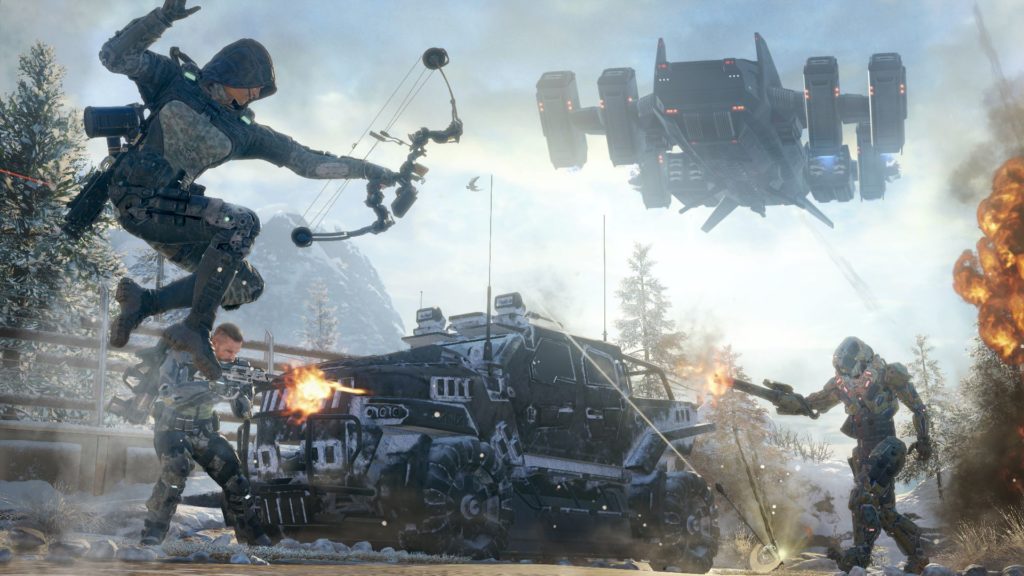For years, the NPD Group has issued monthly reports detailing video game software, hardware and accessory sales, showing the growth and decline of the industry. However, the one missing feature is how those reports didn’t cover digital sales made on services such as Steam, Xbox Live or the PlayStation Network, which make up a very significant (and growing) part of video game revenues. But that will soon change, as the NPD Group recently announced the launch of its Digital Game Tracking Service, developed in partnership with major publishers that include Activision Blizzard, Electronic Arts, Ubisoft, Take-Two Interactive, Square Enix, Capcom, Deep Silver and Warner Bros. Interactive Entertainment. NPD has been tracking the digital sales data from these publishers for the past several years to get a more comprehensive look at the video game industry, which will be shown in this month’s report.
There are still a few limitations. Specifically, major publishers such as Microsoft, Sony, Bethesda and Nintendo are not part of the group. Furthermore, data regarding DLC transactions will not immediately be released to the media, pending refinement. Nevertheless, this is still an important step toward seeing the bigger picture.
Liam Callahan, executive director and games industry analyst at the NPD Group, talked to [a]listdaily about the Digital Game Tracking Service and what might be in store for the future.

How difficult was it for NPD to develop the Digital Game Tracking Service?
It was certainly a long journey in that it took us several years to recruit publishers and even to determine that a publisher source methodology was the right path for us to reach this goal. Then we were in beta for several years. So it was certainly difficult in the sense that it took a long time getting publishers to the comfort level they’ve reached now—to go with us on this journey—and reveal data in the public domain.
Were publishers supportive of developing the Digital Game Tracking Service?
Generally, we have a great representation of some of the key publishers in the industry, and we are continuing to talk to non-participants to further flesh out the service. We’ll continue to engage with those folks. I think the list [of publishers] really speaks for itself. We received a lot of strong support, and I think part of that was the benefit of having publishers have access to this data over a beta period so they could understand that this was an important thing to move forward with—that it was an important data set that could help them with their business. That was all part of the process.
Does the Digital Game Tracking Service take into account events such as major discounts from digital retailers?
Yes, it takes into account any sort of discount. It’s the real data, so any kind of promotional activity or temporary price reduction is part of the methodology. Same thing with our physical side. Whatever the price is when somebody buys it, that’s the data that we have.
Data regarding add-on content won’t be released to the media yet. What are the challenges involved with tracking DLC sales?
The reasoning behind us not releasing it has nothing to do with challenges from a data perspective. We’re coding the data properly, and we have that data in-house. It’s a matter, first, of how we want to have a bit more comprehensive participation before DLC is ready for prime time. Second is just the comfort level with the panelists. Panelists moved to a point where they felt full game downloads combined with physical was the right first step.
That’s the first step we’re taking now, and hopefully over time, we can get to the point where there’s comfort with also releasing DLC. We’ve had many other steps, but this is the first one we’ve talk about publically, and we’re going to see many more steps and move further along.
In addition to including more publishers, how do you see the digital tracking service evolving in the future?
For me, I think there’s an opportunity to develop robust projection methodology. Part of the plan is to have something in place that accounts for non-participants, much like we do on the physical side, and having that be the gold standard for digital tracking—just as much as our physical data in the US is considered the gold standard in terms of its accuracy and representation of the full market. We have a lot of things we’re evaluating, and we knew it would take a while to get there. We wanted to take that first step, and we understand it’s a partial set, but it’s a highly accurate set in terms of having all the data from those participants. Those participants represent a wide variety in terms of the size of publisher and content.
Then, as I mentioned, getting to a comfort level where DLC goes for long-term. I think NPD in general will go where the trends go. We will go where our clients want us to go, which is constantly a conversation with our clients to understand the things that they think are important from a tracking perspective.
I’d rather not be super-precise about it because it’s a dynamic industry. You have to be flexible on what you may do at step 3 or 4 because whatever that might be might not even be in existence right now. If you think about DLC and some of the free-to-play mechanics we’ve seen evolve over the last few years, they weren’t in place to the degree they are now a number of years ago. So some of it is being flexible, understanding that the industry changes, and we have to adapt and change along with that. That’s how we think the service, and our research products in general, will continue to grow and evolve.
How long do you think it will be before we can see the big picture in regards to consoles, PC games and DLC sales?
Honestly, I can’t put a timeframe on that. Some things may happen quickly, and getting to certain areas of gaming to participate may take longer. Incentives might be different for certain panelists. It’s about recruiting, and it’s about projecting and having something in place that accounts for everything. That’s our near-term goal. I can’t really say how long that will take because those things are moving targets.
Do you think that someday independent developers like Riot Games and Psyonix may want to participate in the Digital Game Tracking Service? What would be the incentive?
Yes, I think that we’ll continue to grow the panel to get independent developers and really big free-to-play guys like Riot. I think the incentive for them is to understand what’s going on in the marketplace outside of their own business, understand different business models, franchises and types of games—to use that for planning anything that has to do with their business decisions. And I think it’s very much like the incentive to have questions answered that you wouldn’t have otherwise.
But if you drill in more to the physical side of things, I think the reasons you get with our physical business are the same reasons and conversations we had with publishers on the digital side about the value of the data. Namely, understanding your competitors, understanding the pace and size of digital, how quickly it’s growing, and how big it really is.
I think there’s something very unique in digital regarding DLC. It’s something, if you consider the grand scope of video games, that is relatively new. And I think there is a lot of learning that is still taking place, such as how to maximize it, how to roll-out DLC, and even taking the kind of durable map pack and mod driven model (which still works for many games) and moving it toward a consumable model—where currency is something that’s popular. How that dynamic takes place? What are the pros and cons? That’s something that’s an incentive for someone to join because they’ll be able to see things beyond their own data to understand the bigger picture. I think that’s the point of this data—and really, any research is sort of to get that competitive information and that bigger picture, and then make better decisions about your business going forward.

